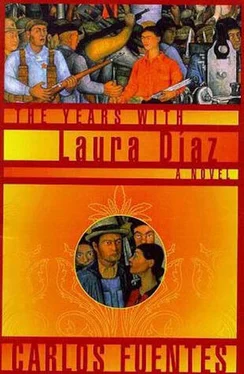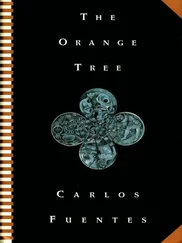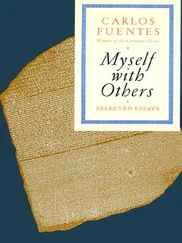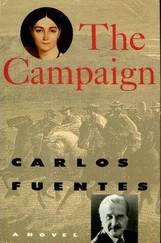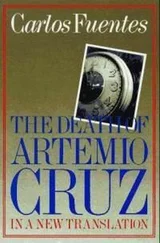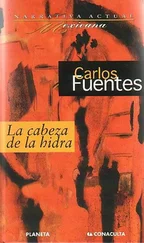Aunt Hilda was playing the piano; Aunt Virginia was still writing with a quill pen; her mother Leticia was cooking not only because she liked to but because she had a genius for the Veracruz art of uniting rice, beans, plantain, and pork, shredding the meat and adding lemon juice for the dish called ropa vieja, “old clothes,” marinating octopus in its ink, and reserving for the end the meringues, the custards, the jocoques of clotted cream and the tocino del cielo —the sweetest sweet in the world, which had gone from Barcelona to Havana and from Cuba to Veracruz as if to stifle with sweetness all the bitterness of those lands of revolution, conquest, and tyranny.
“None of that, now. I don’t want to know about Mexico’s past: the New World is only future,” declared the grandfather firmly whenever these topics came up. For that reason, he went out less and less to after noon gatherings and dinners, and no longer to taverns, ever since he forgot himself that tired night … At first he didn’t go to Mass either, under the pretext that first he was a socialist and second a Protestant. But small towns are big hells, so he ended up yielding to the customs of a Veracruz that believed in God and miracles but not in the Church and its priests. This pleased Felipe, not because he was a cynic but because it was more comfortable. But the entire town became uncomfortable when Don Elzevir Almonte appeared, a young, dark skinned, and intolerant parish priest sent from the very puritanical clerical city of Puebla de los Angeles. He, along with a good dozen other priests from Mexico’s central plateau, had been charged by the Archbishop of Mexico with establishing discipline and good habits among the lax (if not dissolute) faithful of the Gulf coast.
Cosima Reiter, the mail-order bride, had been born and raised Protestant. Philip-Felipe, who was agnostic, had realized that he’d never find a nonbelieving wife in Mexico; here even atheists believed in God and Protestants were Catholic, Apostolic, and Roman.
To order an atheist bride from the Germany of Kaiser Wilhelm seemed not so much like an offense as a tropical joke. Philip went along with the advice of friends and relatives on both sides of the Atlantic; however, what really captivated him was that daguerreotype of the girl holding a fan in her right hand, her black hair divided into two perfectly symmetrical curves by a strict part.
The young Lassallist did not anticipate that the moment his still very young wife reached Veracruz a conformist streak — the rule, no matter how notable the exceptions, in religious communities — would for many reasons become pronounced in her. Social pressure was the least important of those reasons. More significant was her inevitable discovery that Philip, or Felipe, had not lived a saint’s life during his Veracruz bachelorhood. This foreign boy with long wavy hair, blond beard, and Greek profile would never follow a monastic rule. Rumors circulating in the small lakeside population reached Cosima’s ears as soon as she’d unpacked. Twenty-three hours after the civil ceremony, the beautiful, upright German informed her stupefied husband: “Now I want a Catholic, religious wedding.”
“But you and I were confirmed as Protestants. We’ll have to disavow our faith.”
“We’re Christian. No one has any reason to know more.”
“I don’t see the reason for this.”
“It’s so your mulatta daughter can be my maid of honor and carry the train of my wedding dress.”
Thus did María de la O, almost on the first day, enter the home of the newlyweds. Cosima took it upon herself to assign a bedroom to the young lady, ordering the servants to address her as “señorita.” She gave her a place at the table, treated her as a daughter, and refused to acknowledge anything about her origin. No one except María de la O herself heard what Cosima Reiter said to her real mother: “Madam, choose the way in which you’d like your daughter to grow up. Go live in a place where you can make a life for yourself — Tampico or Coatzacoalcos, and you won’t lack for anything.”
“Except the love of my little girl,” wept the black woman.
“Not even you believe that,” said the brand-new Frau Kelsen, speaking to her familiarly, having quickly learned local customs and habits. One day, when she’d become an old lady, she reminded her husband of that event, not knowing that little Laura was listening from behind a potted fern.
María de la O Kelsen was the way Cosima would introduce the beautiful little mulatta, and that was how Don Felipe accepted her. The lady of the house didn’t even have to beg her husband to be faithful to the humanitarian principles of his youth. Cosima took charge and began to go to Mass, first with the mulatta girl and a missal held in both hands; later, with three more daughters and the missal in one hand, proud of her four-sided maternity, indifferent to whispers, shock, or curses, even when evil tongues said that the Hunk of Papantla was the real father — with the difficulty that the bandit was Creole, Doña Cosima German, and María de la O, in that case, explicable only as a racial throwback.
Seven years older than the eldest of her sisters, Hilda, eight years older than Virginia, and ten than Leticia, María de la O was a mulatta with charming features, a quick smile, and an upright gait: Cosima had found her bent over and groveling, like a beaten, cornered little animal, her black eyes filled with even blacker visions; and not wasting a moment, the child’s new mother by will and right, Cosima Reiter de Kelsen, taught María de la O to walk properly, even forcing her: “Put that dictionary on your head and walk toward me without letting it fall. Careful.”
She taught her table manners, how to be neat; she dressed her in the most beautiful starched white dresses because they contrasted dramatically with her dark skin. She made her wear a white silk bow in her hair, which wasn’t stiff like her mother’s but relaxed like her father Philip’s.
“Now you I’d bring back with me to Germany,” Cosima said proudly. “You would certainly attract attention.”
She went to church and told Father Morales, I’m going to have a baby and then at least two more. “I don’t want any of my children to be ashamed of their sister. I want the Kelsens yet to be born to enter the world and find a Kelsen who is different but also better than they.”
She rested a hand on María de la O’s chignon. “Have her baptized, confirmed, rain blessings on her, and for the love of God, pray for her honesty.”
He hesitated an instant and replied: “Let’s hope she doesn’t turn out to be a whore.”
The good thing was that the priest from Veracruz, Don Jesus Morales, was a good-natured man without being servile, and everything in him — his public sermons, his private chats, the confessions he heard in secrecy — protected and exalted the Christian behavior of Doña Cosima Reiter de Kelsen, by now very much a convert to Roman Catholicism.
“Ladies, don’t waste the triumphs of either faith or charity on me. All of you in good order now, dammit.”
The priest Jesus Morales loved his flock. The substitute priest, Elzevir Almonte, wanted to reform it. The fingers Grandmother Cosima was missing seemed to have sprouted on the new priest, and he used them to admonish, censure, condemn … His sermons brought to the tropics the air of the high plateau, rarefied, suffocating, intolerable and intolerant. His parishioners began to count the prohibitions hurled at them from the pulpit by the dark young priest Almonte: no more of these loose camisoles that reveal the female form, especially when it rains and they soak through; from now on, modest undergarments and umbrellas in hand; no more of these foulmouthed Veracruz expressions and actions; though I’m not a magistrate or a justice of the peace, I declare that anyone who curses may not receive the holy body of our savior in his sacrilegious mouth — that much I can do; no more serenades, a pretext for nocturnal excitation that hinders Christian repose; brothels are forthwith closed, taverns are forthwith closed, and under pain of mortal sin a curfew is declared beginning at 9 p.m. whether or not the authorities approve — and if you think I’m joking, just wait and see; you will say from now on “that which I walk on,” not “legs,” just as you will say “that which I sit on” instead of …
Читать дальше
